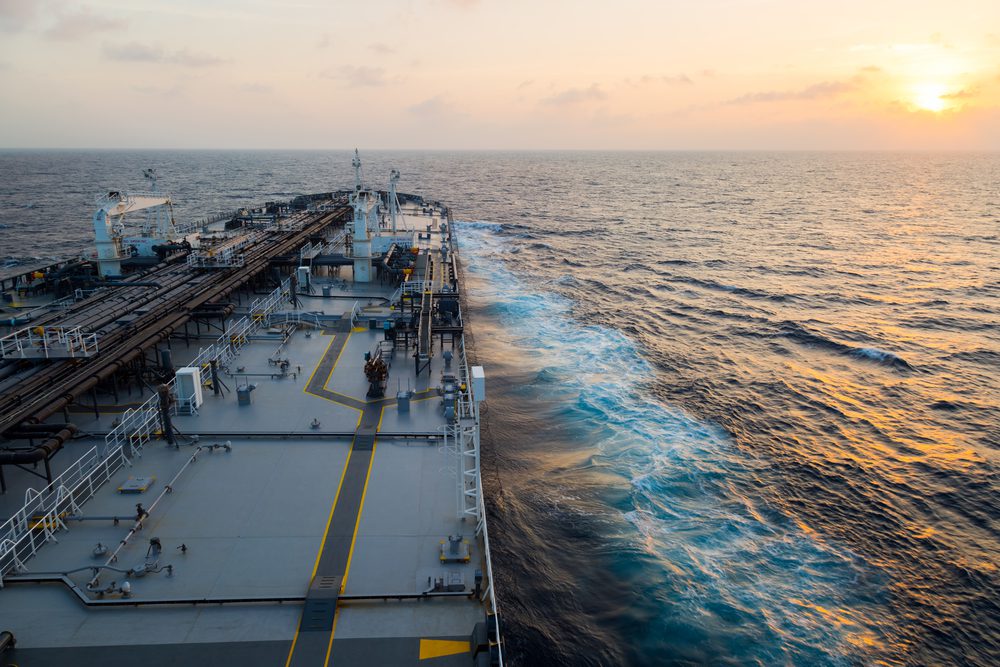Anatoly Menzhiliy / Shutterstock
By Jack Wittels (Bloomberg) — One of the more lucrative opportunities in global commodities markets is about to get a little bit trickier.
What might best be described as detour trades — ships switching destinations to profit from higher cargo prices — will become more challenging to execute in 15 months’ time because of changes to the kinds of fuel vessels must burn, according to several industry analysts and a former engineer for A.P. Moller-Maersk A/S.
The deviations — often delivering outsize profits to traders — will become tougher for two reasons. The first is that fuel for the shipments currently looks like it will cost a lot more than what owners pay today; the second is that fuels may be incompatible from one supplier to the next, making topping up a more complicated task. Some shipping groups have even said the lack of a uniform product could cause their carriers to break down.
“It’s not like buying petrol at the petrol station where you can buy petrol from BP, Shell, Q8, whoever, mix it all up and it doesn’t matter,” said Martin Verle, who serves on a U.S. committee to help define fuels for the International Organization for Standardization. “From the supply side, nobody will guarantee that ‘my fuel’ is compatible with someone else’s.”
The trading hindrance is the result of a switch from a widely used shipping fuel today to a range of cleaner options post-2020, when International Maritime Organization rules to lower sulfur emissions will start.
Deviations might not be possible if a vessel needed to sail to a location where compatible fuel was unavailable, according to Verle, who also previously worked as an engineer for Moller-Maersk.
Switch Hits
“It could impact on where you trade if you know that fuels are incompatible,” he said, adding that using mismatched fuels might result in blocked filters, potentially leading to engine blackout. “Companies are going to really have to be on the ball with their fuel management procedures.”
Detour trades happen intermittently, often helping to avoid localized shortages of a commodity when there’s an unexpected disruption in the supply chain. A batch of gasoline tankers heading toward New York switched away last month because of market conditions and the arrival of Hurricane Florence. Gas carriers, crop carriers and crude tankers deviated over the past year for various reasons.
“Traders make a margin on responding to events,” said Alan Gelder, vice president for refining, chemicals and oil markets at consulting firm Wood Mackenzie. “They do best when they’re major, unforeseen events…It’s an important part of their income. It’s probably disproportionate in terms of profitability versus volume.”
Cost Hike
Even without the compatibility issue, the price of ship fuel looks likely to affect trading.
Cleaner, compliant fuels for purchase in 2020 are already trading at large premiums to today’s dirty bunkers. Since fuel is an owner’s single biggest cost, this would make shipping more expensive. Transactions involving lower-priced commodities like iron ore, where freight is a larger part of the delivered cargo cost, stand to be hardest hit, said Gelder.
In today’s market, fuel compatibility isn’t such a big issue. Shippers generally only have to match a couple of specifications to mix fuels. From 2020, they will have to choose between different marine fuels which won’t necessarily be interchangeable.
“It’s fair to say that it will make trades involving cargo diversions harder, but there are many variables,” said Peter Sand, chief shipping analyst at industry association Bimco, adding that he expects ship owners to be prepared and take precautions.
Dangerous Mix
The two main clean marine fuels from 2020 will be an existing 0.1 percent sulfur product and a new batch of so-called bunkers with maximum 0.5 percent sulfur. Shippers also have the option of continuing to burn today’s dirtier fuel, but must first install scrubbing equipment. Following the transition, availability at smaller ports not used to stocking different products could be challenging.
“If you’re mixing 0.5s and less-than 0.5s, and there’s carbon residue in the fuel, the risk will be worth considering,” said Rudolph Kassinger, who has more than half a century of experience of refining and petroleum quality testing.
Shippers looking to dodge the problems by sticking with one fuel or the other face a number of snags. The 0.1 percent product has been available for years, Kassinger says, but it’s less commonly used because it’s more expensive.
At the same time, the new 0.5 percent fuels could be made through different refining processes, or from different crudes. Some will likely contain asphaltenes, others won’t. If they’re mixed together, the asphaltenes could drop out to form a sludge that could damage the ship’s engine.
For owners and traders, those fuel challenges will compete against the commercial imperatives to move cargoes profitably.
“Owners will be stuck between a rock and a hard place,” said Sand. “After all, they make money when they sail, not when they say no to a fixture.”
© 2018 Bloomberg L.P

 Join The Club
Join The Club











